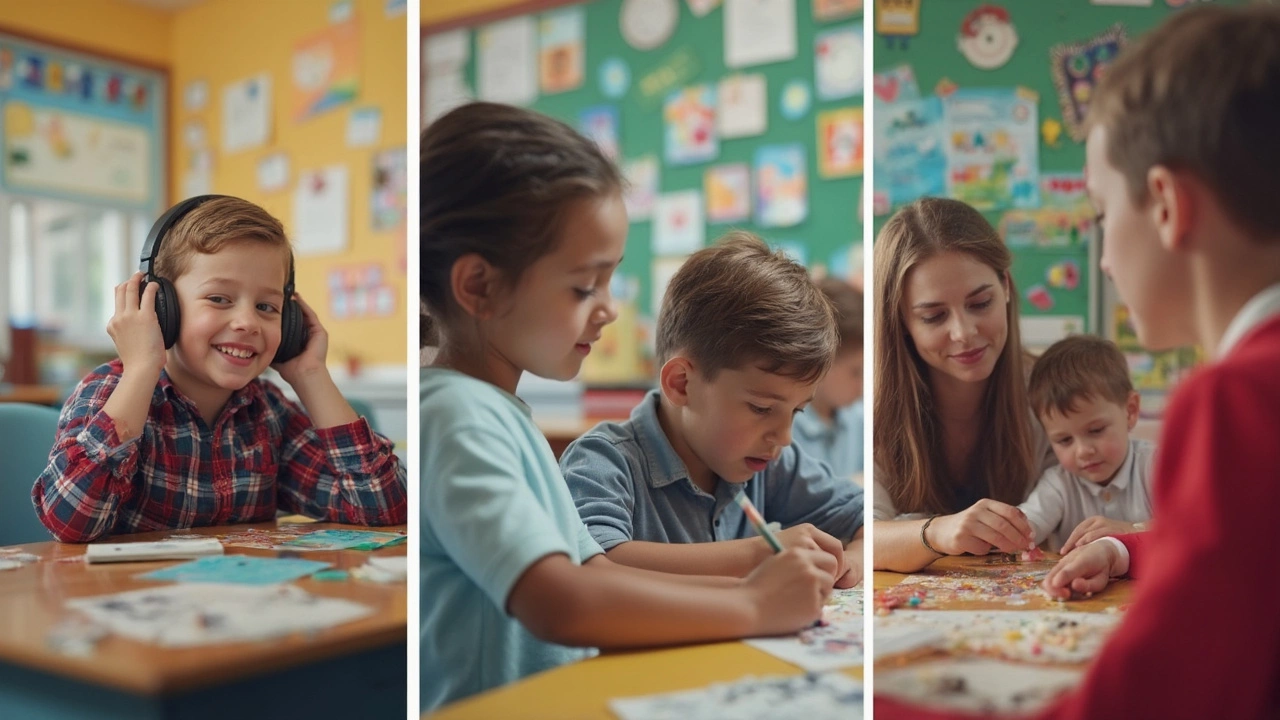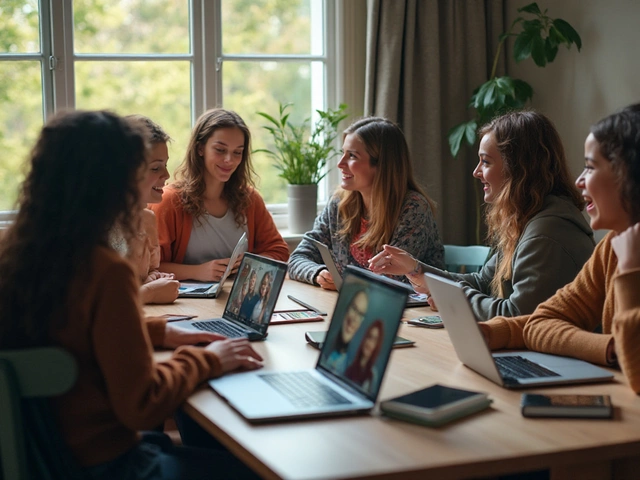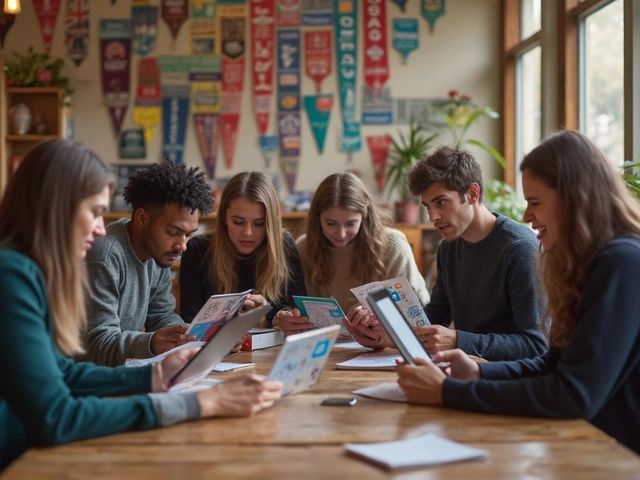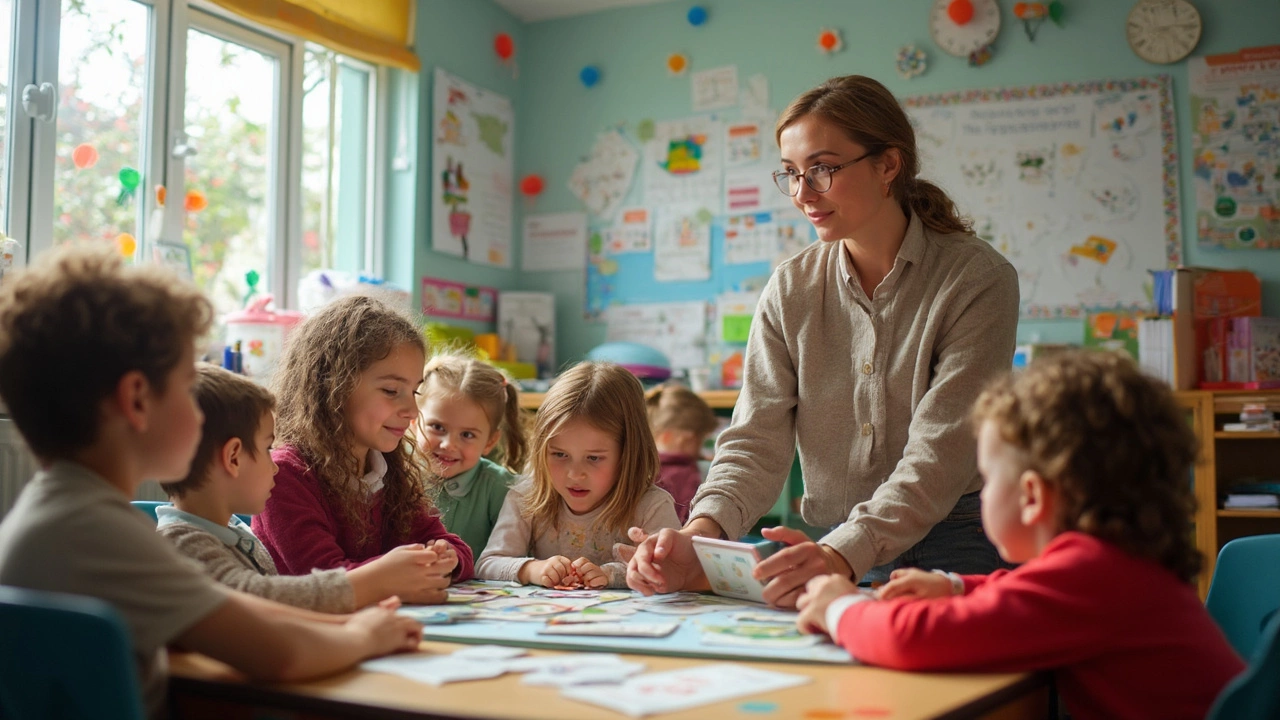Ever tried to read a map without your glasses? That’s what learning can feel like for kids with special needs if lessons aren’t tailored to them. The truth is, there’s no magic formula—just good habits, clear tools, and knowing each student well.
Start simple: pay attention to how each learner reacts. Some might need pictures with every story, while others respond better if you keep directions short and sweet. Talking with parents or caregivers gets you gold—nobody knows a child’s quirks or strengths better than they do.
Small tweaks go a long way. Think big fonts, color-coded tasks, and step-by-step checklists. Some kids do better standing up or with fidget tools in hand. If you let them take short breaks, don’t be surprised if focus comes back sharper than before.
- Getting to Know Your Learners
- Adapting Lessons and Materials
- Building a Supportive Classroom
- Collaboration with Families and Experts
- Celebrating Progress, Not Perfection
Getting to Know Your Learners
If you’re going to help a student with special needs, the first thing to do is really get to know them—not just their diagnosis or label. Every learner has quirks, strengths, and preferences. A 2019 CDC report found that about 1 in 6 kids in the US has a developmental disability. That means you’re probably teaching someone who learns differently, even if it isn’t obvious at first.
Take the time to watch how each student acts during different activities. Some might get overwhelmed by noise, while others need lots of movement. Ask open-ended questions—not just about learning, but about what they like to do, their favorite snacks, or what makes them feel safe.
You’ll get even more insights by chatting with families. They can tell you about routines or tricks that work at home. A quick form or a five-minute call can reveal way more than a long meeting. Surveys can be simple:
- What helps your child calm down?
- Any big dislikes or triggers?
- What are they proud of?
Don’t ignore the official stuff. Check their Individualized Education Program (IEP) or 504 Plan if there is one. These plans outline supports, goals, and any special accommodations. If you’re not sure what something means, ask a special needs expert at your school.
Document what you learn and share it with your teaching team. It helps keep things consistent and avoids surprises.
| Method | How Often | What You Learn |
|---|---|---|
| Observation | Weekly | How students behave and react in class |
| Family Talks | Monthly | Home routines, challenges, strengths |
| IEP Review | Each term | Official goals, accommodations, and supports |
| Student Surveys | Start & mid-year | Preferences, self-identified needs |
Seriously, the best results come when you treat every learner, regardless of their label, as a unique person. That’s what special needs education is all about.
Adapting Lessons and Materials
If you want more kids to catch what you’re throwing in class, you need to change up your game plan. A huge part of teaching special needs learners is making materials simple and breaking lessons into bite-size chunks. Not everyone learns the same way, so why should every worksheet look the same?
For starters, try using visuals—charts, pictures, or even short videos. Research from the National Center for Learning Disabilities says over 60% of students with learning challenges benefit when lessons use both words and images. You can swap text-heavy reading with graphic novels or audiobooks. Got a math word problem? Turn it into a hands-on project with blocks or real-life objects.
- Provide instructions in several ways—like speaking, showing, and giving written steps.
- Offer choices in how kids show their work—drawing, talking, or using tech tools.
- Highlight or color-code important info on worksheets so it’s easy to find.
- Chunk assignments. Instead of a stack of math problems, give three at a time and celebrate small wins.
- Use timers or visuals to show how long a task will last. Most kids, especially those with ADHD or autism, work better with clear timing.
If you can, add tech into the mix. There are loads of apps for text-to-speech, visual schedules, or writing support. Speech-to-text can help kids who struggle with handwriting get their ideas out fast. The goal is to give everyone a fair shot to shine, not just the ones who fit the usual mold.
| Tool/Adaptation | Percentage of Educators Using (2024) | Reported Success Rate |
|---|---|---|
| Visual Schedules | 72% | 68% |
| Text-to-Speech Software | 55% | 75% |
| Chunking Instructions | 86% | 81% |
| Flexible Seating/Fidget Tools | 49% | 62% |
Mixing up your lessons makes sure no one gets left behind. Once you get the hang of it, adapting materials doesn’t mean more work—it just means smarter teaching for everyone.

Building a Supportive Classroom
If you're serious about helping every learner thrive, the classroom needs to feel safe, welcoming, and predictable. This isn't just about posters on the wall—it's the routines, the way you talk, and how you deal with mistakes. Research shows students with special needs learn better when they know what to expect and feel accepted by their peers.
Clear classroom routines are a lifesaver. Start each day the same way, whether that’s a warm-up activity, a check-in, or reviewing today’s plan together. Visual schedules are huge for keeping everyone on track, especially for kids who get anxious with surprise changes.
Some children need a quiet space to cool down or recharge. This can be as simple as a beanbag in the corner with noise-canceling headphones or a box of calming fidgets. Let students know it’s fine to use these breaks, and show the whole class how it works so nobody feels singled out.
Classroom rules should be short, positive, and written in plain English—think “Use kind words” instead of a list of “Don’ts”. Teach and practice these together, again and again, so everyone understands. Consistency is key.
Peer buddies work wonders, too. Pairing up students helps break down social barriers and builds teamwork skills. If you have a class helper system, rotate it so everyone gets a shot. It’s about building a community, not just managing behavior.
Finally, talk about differences openly. Kids know when someone is struggling; hiding it doesn’t help. Open conversations about how everyone learns differently creates a culture of respect and flexibility. That’s the backbone of great special needs teaching.
Collaboration with Families and Experts
If you’re not teaming up with families and specialists, you’re basically playing a solo game that’s rigged against you. Parents and caregivers aren’t just background characters—they’re living with the daily highs and lows, so their input is super valuable. Even the best teachers miss stuff that shows up only at home, like after-school meltdowns or tricks that calm a meltdown in seconds.
Experts matter too. Speech therapists, occupational therapists, and school psychologists look at problems from angles most teachers don't see. Don't just wave at them in the hallway—set up regular meetups, either quick chats or email check-ins. The more everyone shares, the faster you find what works for the student.
- Invite parents to talk about what helps their child and what’s a no-go.
- Stay open to feedback—sometimes families will spot small changes (like a new desk setup) that make a big impact.
- Share wins with parents, not just struggles. Quick texts or photos go a long way.
- If you get advice from an expert (like a simple fidget tool from the occupational therapist), actually try it and share the results.
For kids with a formal Individualized Education Program (IEP), it’s not just paperwork. You’re on a team—everyone’s voice counts. Regular check-ins are normal, not a last resort. If a plan isn’t working, tell someone fast. Flexibility keeps the student moving forward.
Remember, the main goal is for everyone to have each other's back. Strong teamwork leads to better ideas and more happy moments for students. In special needs education, no one gets very far alone.

Celebrating Progress, Not Perfection
Here’s the thing: progress in special needs education should never be measured by perfection. Tiny wins matter. Did a learner finally raise their hand? That deserves a high five. Managed to focus for ten minutes today, up from six last week? That’s real growth.
What really works is making a big deal out of steps forward, no matter how small. Sticker charts, shout-outs during class, or letting a student show off their best work can all boost confidence. Kids—especially those with learning disabilities—thrive on encouragement and real evidence that they’re getting somewhere, not just reminders of how far they have to go.
This mindset isn’t just feel-good—it’s backed by research. A study published in the Journal of Special Education found that praise and positive feedback led to a 30% jump in task completion for students with special needs compared to neutral or corrective feedback. Celebrating effort helps kids keep trying, even when things get tough.
- Give feedback right after a student does something well so it sticks.
- Highlight effort, not just results. "You worked hard on every step," means more than “You got it right.”
- Make sure every student’s progress is noticed, not just the biggest leaps.
| Area | How to Celebrate Progress |
|---|---|
| Reading | Mark how many new words a child tackles each week. Praise, even if just one more word is read. |
| Social skills | Notice when a student greets a friend or joins a group on their own. |
| Independence | Celebrate when a student follows a routine by themselves, even if it’s just zipping their backpack. |
Want to take it further? Share small victories with families—email or text a quick note. This helps parents see real change and gives students extra motivation, since their team is cheering them on. Forget chasing perfect. Progress is the real win.






